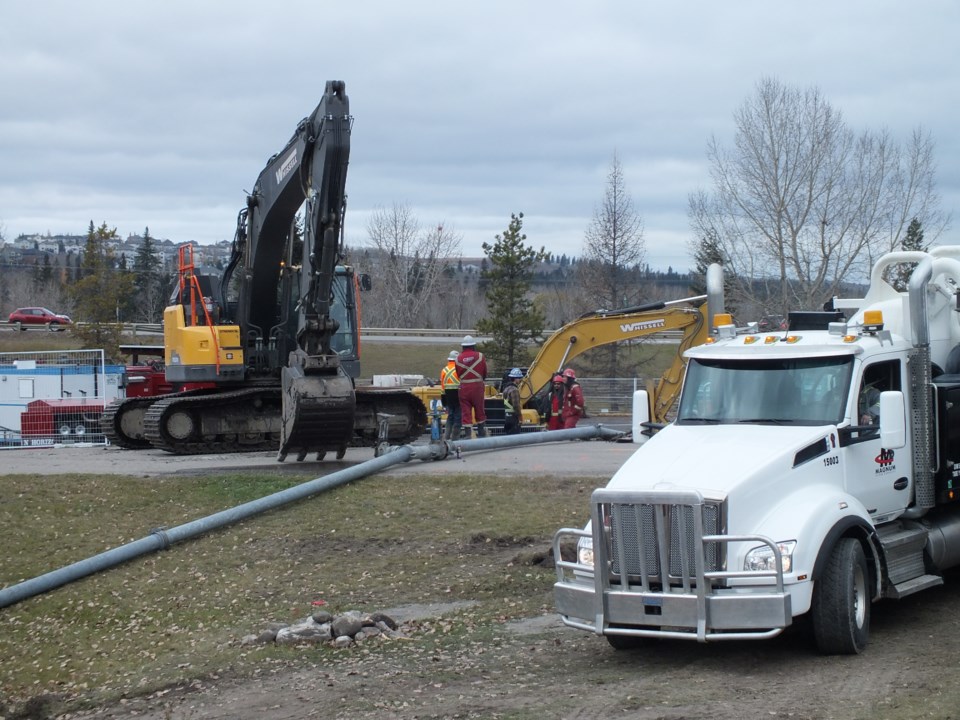The provincial department responsible for the environment and keeping drinking water safe has been working closely with emergency responders in Cochrane since the sewage leak at Riverfront Park was discovered Oct. 21, and they have launched an investigation.
“Alberta Environment and Protected Areas (EPA) drinking water operations specialists and drinking water inspectors were dispatched to Cochrane to ensure the Town and EPA were well co-ordinated while providing additional assurance regarding the safety of drinking water. EPA’s role was largely to oversee and support the municipal response,” said EPA communications director Tom McMillan.
As part of the repair of the damaged drinking water pipe, the Town of Cochrane has been doing additional testing of the treated drinking water in the distribution system.
A sanitary sewage pipe was also damaged and spilled into the Bow River for a couple of days.
“This is normal practice to ensure drinking water safety. EPA staff have been working with Alberta Health Services and the Town of Cochrane to ensure that proper procedures, including testing, are followed during the repair and recommissioning of the pipe.”
The repair operations are a joint effort involving the Town of Cochrane and Whissell Contracting Ltd., (the private contractor working on the Highway 22 to Riverview Syphon infrastructure project nearby when the breach occurred).
Adjacent communities, including the City of Calgary, and provincial agencies were kept apprised of daily developments.
“Our focus was, is, and always will be on ensuring the safety of drinking water in Cochrane, Calgary and other communities downstream,” McMillan said. “During and immediately after the spill, we worked with downstream water system operators to help them understand the potential risks to drinking water quality and ensure risk reduction strategies were put in place, such as using off-stream raw water storage reservoirs or ensuring all treatment processes were using an effective multi-barrier approach.”
The City of Calgary provided EPA with the results of the raw water sampling taken at their Bearspaw drinking water treatment plant intake, which were monitored to help ensure downstream water safety.
As far as assigning responsibility for the incident, which resulted in an as-yet undetermined discharge of raw sewage effluent into the Bow River, water restrictions, and the declaration of a Local State of Emergency, that determination could take some time.
McMillan declined comment on what, if any, penalties might be available to the province.
“This is an open investigation,” McMillan said.
“Under the Environmental Protection and Enforcement Act, there are a number of enforcement tools available to address potential contraventions of the Act. As this investigation is open and underway, we cannot comment further.”




